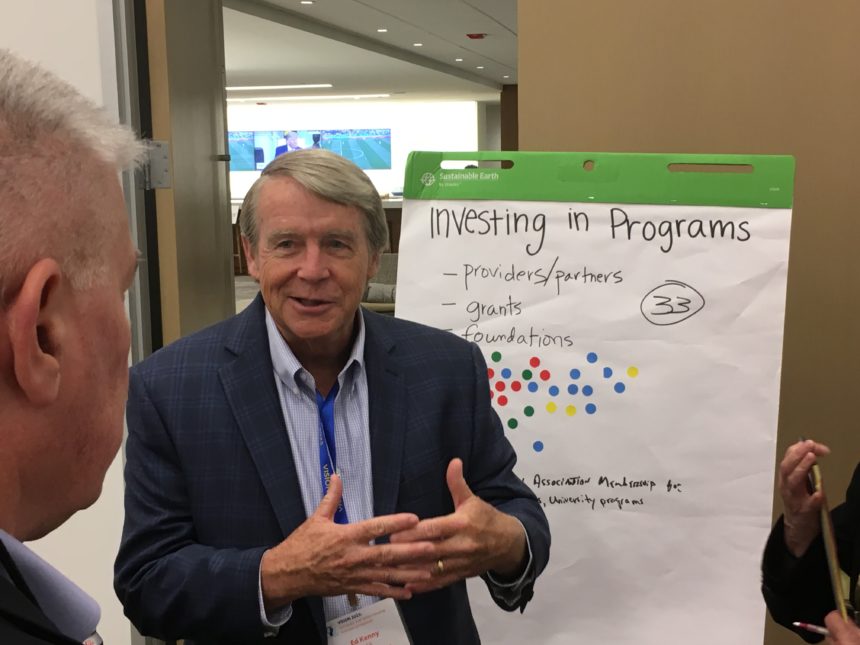
Providers and educators have entered a new stage of long-term care leadership development and now eagerly are awaiting blueprints for the next steps, which could arrive this summer.
The optimism emanates from the Vision 2025 symposium, which brought together a “historic” group of 130 high-level providers, university representatives and other interested players last week in Chicago. More than 30 colleges and about as many long-term care and assisted living operators were represented.
More than three million top manager positions will need to be filled to meet the growing aging wave, experts have estimated. Vision 2025’s goals are to develop 25 “robust” college-based programs that will offer senior services management training and to produce 1,000 paid internships for potential future leaders by 2025.
Currently, event organizers said, there are only a handful of college programs dedicated to long-term care, assisted living and related management education. And they produce nowhere near the 1,000 opportunities targeted.
A summary report and game plan for the next steps is expected by mid-summer, said symposium leader Douglas M. Olson, Ph.D., an assistant professor at the University of Wisconsin-Eau Claire and director of its Center for Health Administration and Aging Services Excellence (CHAASE) program.
He called on participants to show “passion and energy to push forward, to include being a little bold.” He was heartened, he said, by connections that started forming over the two-day conference.
“We can do better than we’ve been doing [training leaders] — we know we can do better,” said Olson, whose program is the envy of numerous providers and educators.
After sessions featuring association, provider and educator panels, symposium participants voted Thursday on key strategies to pursue. The clear leader was the creation of paid internships, followed by a campaign to create rebranding and positive language to produce better “optics” for the seniors housing and care sector.
Other top vote-getters: the design of career paths, investment in educational programs (via grants, foundations, etc.), collaboration among stakeholders, and increasing exposure among younger and second-career students.
“The six key themes were not terribly surprising, but what surprised me more was the support that most people gave to the plans and programs,” Vision 2025 co-chairman Steve Chies told McKnight’s. “And the fact that we’ve had the seven key aging associations on the stage, saying we need to work together” can’t be overestimated, he added.
The groups represented on the “endorsing organizations/associations” panel were the American Health Care Association, Argentum, LeadingAge, the American College of Health Care Administrators, the National Investment Center for Seniors Housing & Care, the American Seniors Housing Association and the National Association of Long Term Care Administrator Boards Foundation (NAB Foundation).
“This is the start of the movement, to get people pushed to understand what the need is, where we need to go,” Chies said. “We need two more players in the conversation.”
The first, he said, is senior advocates, such as the Alzheimer’s and Parkinson’s disease associations, to “make sure they understand what we’re trying to do, and we understand what their expectations are.”
The other group is government, especially state Medicaid programs, Chies added. “They have to understand if we’re going to have successful aging communities and high-quality leaders, that government also has to help us out investing in this.”
The Vision 2025 event was sponsored by the participating associations and Ziegler, which hosted the event.




